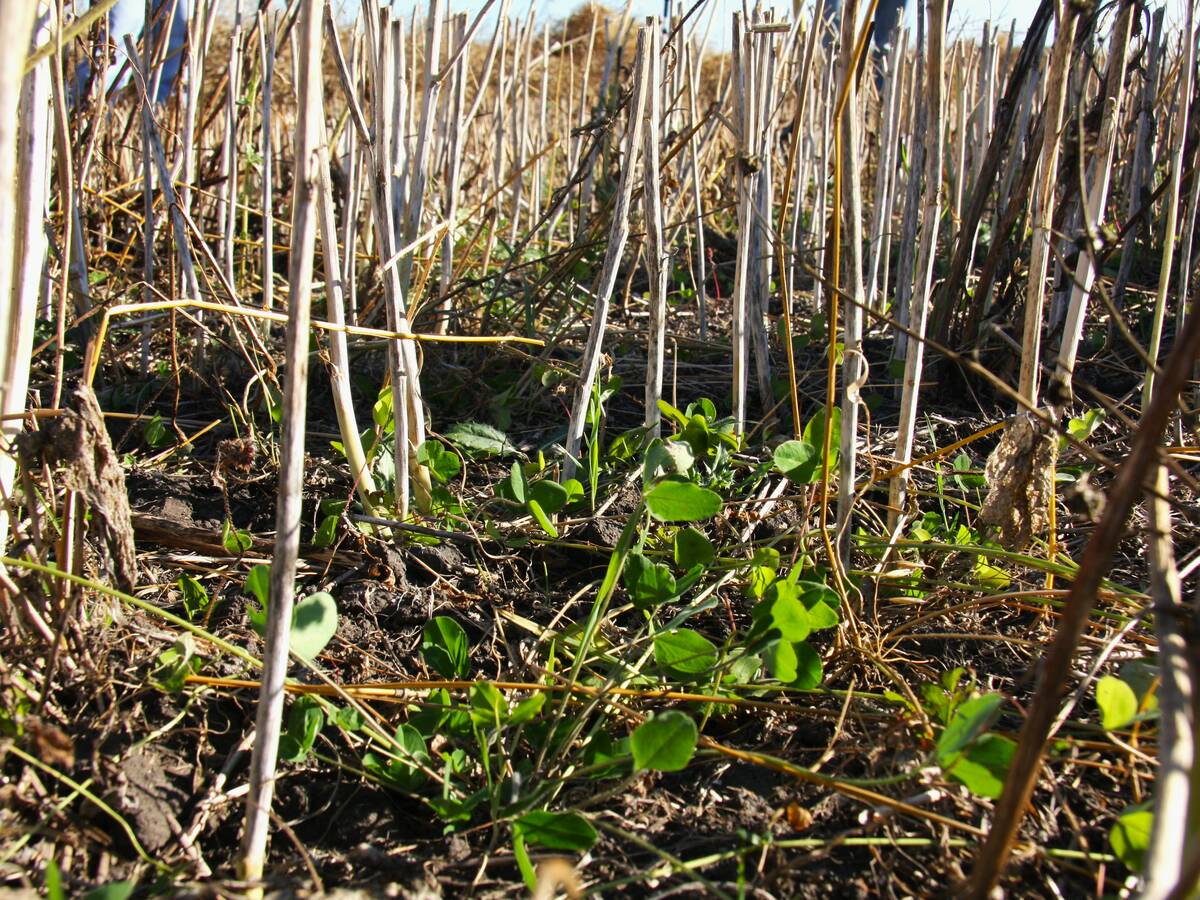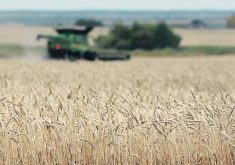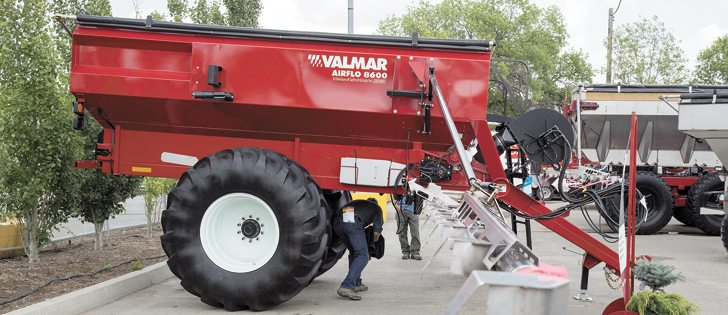REGINA — Salford has introduced a high capacity pull-behind boom spreader to compete with large floater trucks in the spreader market.
It has a 580 cubic foot hopper and delivers product through a 66-foot air boom.
Salford’s Mark Van Veen said most customers operate the Magna Boom Spreader at 10 to 18 m.p.h., but that 14 m.p.h. is the most comfortable operating speed.
“At that speed, a minimum amount of product would be in that 50 pound per acre range,” he said.
“The top end of the amount of product would be around 1,000 pounds per acre.”
Read Also

Saskatchewan project sees intercrop, cover crop benefit
An Indigenous-led Living Lab has been researching regenerative techniques is encouraging producers to consider incorporating intercrops and cover crops with their rotations.
Van Veen said the boom spreader is better for applying product under windy conditions than are spinner spreaders.
“The big advantage of this particular machine is its ability to spread in higher wind conditions, which are an issue in Western Canada,” he said.
“This is because the only distance it needs to accommodate wind for is from your splatter plate to the ground. It doesn’t need to accommodate for wind speed from the funnel all the way out 33 feet to the end.”
The booms are stainless steel and have seven-foot break-aways on the end to protect the machine if the boom hits an obstacle such as a pole or the ground.
Twin hydraulic motors turn the bed chain, which pulls the material to a funnel at the rear of the machine. The funnel evenly divides the product to the boom pipes, and a 17-inch hydraulically driven fan delivers the material out to the pipe openings across the boom.
Homemade 24-metre fertilizer spreader
SeedMaster’s application bar a time saver
Salford sprayer offers variable rates, hydraulic power
Splatter plates at the opening of the pipes help distribute product across the field.
Power take-off and tractor supplied hydraulic drive options are available.
The bed chain motors are controlled by the computer, which makes variable rate possible.
“To calibrate the machine, input the amount of product you want per acre,” Van Veen said.
“It does a calibration of so many pounds per rev of the roller chain, you input that into it and it automatically holds your rate pretty much whatever your ground speed is.”
A scale box can be included as an add-on feature.
“You calibrate the machine, you set it and you run it, and then use the scales to back check against it to make sure your calibrations are correct,” he said.
“It also allows you to document how much material is applied per field to make sure that you’ve got the right amount.”
The list price is $155,000, and it needs to be pulled with a four-wheel drive tractor.
“I would recommend a 300 horsepower tractor as a minimum on this particular machine, just because the weight and size of it,” Van Veen said.
















